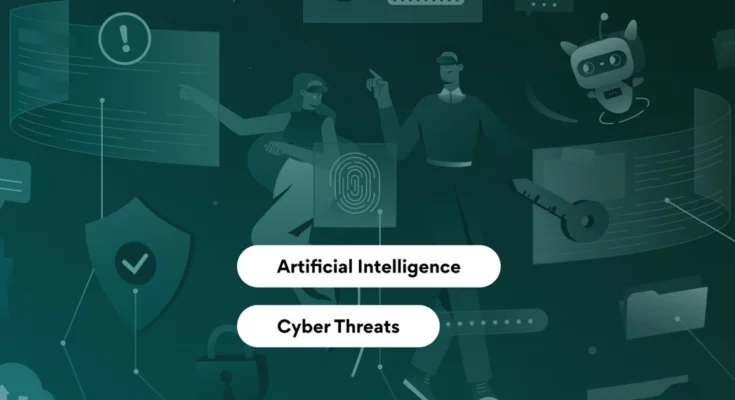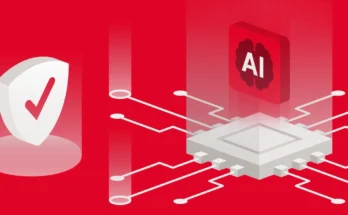Predictive Threat Modeling with AI: The Unstoppable Future of Cybersecurity
Cyber attacks are becoming smarter and more dangerous day by day. Older security tools such as firewalls and antivirus programs cannot keep up with these new threats. These traditional methods react only after an attack has occurred, leaving businesses open to damage from new types of hacking.
A better solution is now available: Using AI to predict and model cyber threats before they happen. Instead of waiting for an attack, AI systems can study patterns, predict where attacks might come from, and help stop them before they do damage. This new approach is changing how we protect computers and networks rather than fixing them after they happen.
This article explains how predictive risk modeling works, how AI helps predict cyber threats, where it’s being used today, and how companies can start using this smart security approach.
What is Predictive Threat Modeling with AI Modeling?
Predictive threat modeling is a new way of protecting computers that uses data analysis and artificial intelligence to predict where attacks might occur before they happen. Unlike old security that only looks for known threats, this method identifies strange behaviors and weak spots that could be used in future attacks.
How it works Predictive Threat Modeling with AI
- Information Collection: AI systems collect massive amounts of security data – such as network activity, how users typically behave, reports of new threats, and records of past attacks.
- Finding Patterns: AI looks at all this information to find anything unusual that could lead to an attack.
- Classification Risks: The system assigns risk scores to different potential threats, focusing on the most dangerous first.
- Automatic Protection: AI can then suggest or even implement security measures to prevent predictive attacks.
It changes computer security from always being on the defensive to staying one step ahead of hackers.
Why Predictive Threat Modeling with AI is Changing Cybersecurity
Hackers are now using AI to make their attacks stronger and faster. To fight back, security teams also need AI. Here’s how this new method works better:
- Finds new types of attacks.
Older security tools only recognize threats they’ve seen before. AI can discover new attack methods by detecting suspicious behavior.
- Makes fewer mistakes.
AI learns over time which alerts are real threats and which are false alarms, so security teams waste less time.
- Anticipates how attacks can occur.
By studying past hacks, AI can imagine how attackers might get in and suggest ways to block them first.
- Automatically works faster.
AI doesn’t just warn about threats — it can quickly isolate infected computers, stop suspicious activity, or patch vulnerabilities.
- Grows with your business.
As companies grow, AI can handle increasing amounts of security data much better than humans alone.
Where predictive risk modeling is being used today with AI.
- Banks: Preventing fraud early
Banks use AI to spot unusual money movements that could be fraudulent, often before any money is stolen.
- Hospitals: Ransomware prevention
Medical centers are often hit by ransomware. AI looks for early signs like strange file changes that precede an attack.
- Government: Blocking spy hacks
Security agencies use AI to predict when foreign hackers might try to steal secrets by seeing how attack methods change.
- Online Stores: Protecting Customer Accounts
Shopping websites use AI to predict when hackers might try to steal login information and stop them first.
How to start using predictive risk modeling with AI
- Add AI to your existing security.
AI works best when used in conjunction with existing security tools such as network monitors and virus protection.
- Keep teaching AI
Because hackers keep changing their methods, AI needs regular updates about new threats.
- Use both AI and human judgment.
While AI can do a lot automatically, people should still check for the most serious alerts.
- Address the biggest risks first.
Not all predictable threats are equally dangerous – focus on those that can cause the most damage.
- Test with fake attacks.
Try simulated attacks to see if the AI predicts correctly and blocks them.
Common questions about predictive risk modeling with AI
- How often is AI right about predicting attacks?
AI is often very accurate, but not perfect. It gets good the more it is used.
- Can small companies afford it?
Yes! There are now many affordable AI security options for small businesses.
- Will AI replace human security experts?
No – AI helps with routine work, but people are needed for critical decisions.
- What is better about AI than regular antivirus?
Antivirus only knows about past threats, while AI can spot new attack methods.
- How quickly can AI stop an attack?
Sometimes in less than a second—much faster than a person can react.
- Can hackers fool AI?
Sometimes, but good AI systems are trained to resist tricks.
- Which businesses need it the most?
Banks, hospitals, governments and critical infrastructure benefit greatly.
- Is it too expensive?
Costs vary, but stopping a major attack can also add up.
- How do we begin?
Start by adding AI features to your existing security systems.
- Will this kill cybersecurity jobs?
No – it changes jobs to focus more on AI and managing complex risks.
Final thoughts for Predictive Threat Modeling with AI
Using AI to predict cyber threats is the next big step in keeping computers safe. Instead of always being one step behind hackers, companies can now stay one step ahead. By combining machine learning, behavioral analytics, and automated protections, businesses can build security that doesn’t just react — it anticipates.
The future of cybersecurity isn’t about building high walls—it’s about having a better perspective. Companies that start using AI threat prediction now will be best prepared for tomorrow’s attacks.




